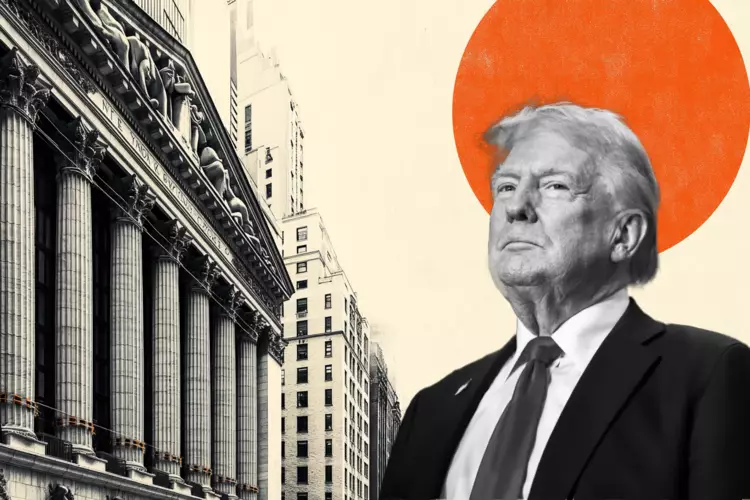On a recent Wednesday, former President Donald Trump unleashed a wave of fervent critique against Federal Reserve Chairman Jerome Powell via his platform, Truth Social, demanding an urgent reduction in policy rates. This plea came on the heels of disheartening data from Automatic Data Processing (ADP), revealing only a 37,000 increase in private sector payrolls, the most dismal growth observed since March 2023. This stark figure not only fell woefully short of the anticipated 115,000 but also signified a widening gap between expectations and reality in the job market. Such a significant divergence from forecasts can trigger heightened responses in both the market and political arenas, highlighting an ongoing tug-of-war between economic policy and political pressure.
The U.S. Dollar (USD) did not emerge unscathed in this turmoil. As traders digested the disappointing payroll figures, the value of the USD edged down by 0.25%, hovering around 99.00 on the dollar index. This decline signals a lack of confidence in the currency amidst pressures that suggest an unstable economic foundation. Trump’s vehement calls for lowered interest rates in light of such data underline a broader narrative—one where political voices seek to leverage economic conditions for strategic advantage.
The U.S. Dollar: More Than Just a Currency
To understand the implications of Trump’s call to action, one must first appreciate the pivotal role the U.S. Dollar plays on the global stage. Serving not only as the official currency of the United States but also as the ‘de facto’ currency in numerous countries, the USD commands an extraordinary presence in international trade. Accounts reveal that in 2022, over 88% of global foreign exchange transactions involved the USD, translating to a staggering daily volume of $6.6 trillion. Such dominance, established in the post-World War II era, has led to the currency’s status as the world’s primary reserve currency—a title it has held since supplanting the British Pound.
Historically, the USD was backed by gold, a standard that crumbled in 1971 as monetary policy evolved. Present-day valuation of the dollar hinges predominantly on the Federal Reserve’s strategic maneuvers regarding interest rates and monetary supply. The Fed’s dual objectives—to secure price stability while fostering full employment—are paramount. Yet, this balancing act is further complicated when external pressures, such as political incitements from figures like Trump, come into play.
Monetary Policy: A Double-Edged Sword
The Federal Reserve’s toolkit includes adjusting interest rates—an action that resonates through the fabric of the economy. When consumer prices inflate beyond the Fed’s 2% target, it typically raises rates, a move intended to strengthen the dollar. Conversely, in scenarios where inflation levels dip or unemployment soars, lowering rates can devalue the Greenback. This interplay between inflation, employment, and the dollar’s strength showcases the delicate balancing act faced by policymakers.
Moreover, in extraordinary circumstances, the Fed may resort to quantitative easing (QE)—a controversial yet impactful policy involving the injection of more dollars into the economy by purchasing government bonds. This process can revitalize a flailing financial system, especially during periods of credit crunch, but it also risks diluting the dollar’s value. It raises pertinent questions: How long can reliance on such measures be a viable solution? What are the long-term repercussions of artificially inflating the economy in response to urgent cries for action?
On the flip side of the coin lies quantitative tightening (QT), where the Fed retracts its bond-buying programs. QT typically results in a firmer dollar as it signals a more robust economic outlook and diminishes liquidity in the financial markets. The skilled orchestration of these monetary policies determines not only the strength of the dollar but also shapes public sentiment and market confidence.
The Intersection of Policy and Politics
Trump’s insistence on rate reductions is emblematic of the intersecting forces of politics and economics. Political leaders often leverage economic conditions to galvanize support or push initiatives, leading to a complicative relationship with monetary authorities. The inherent challenge lies in balancing these political pressures with the Fed’s mandate to ensure economic stability. As Trump continues to vocally critique Powell, the risk grows that such public pressure could lead to reactionary policies, jeopardizing long-term economic health for short-term political wins.
In sum, the dialogue between political figures like Trump and economic entities such as the Federal Reserve highlights an intricate dance—one that reflects the broader challenges and vulnerabilities of contemporary American finance. As policymakers navigate these unsteady waters, the implications of their actions resonate far beyond the confines of Wall Street, impacting every American household that depends on the stability of the dollar.

